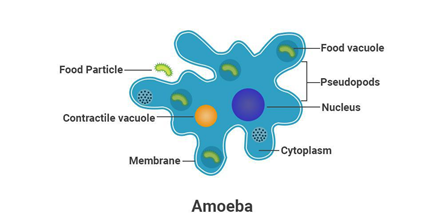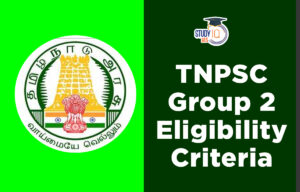Table of Contents
White Revolution 2.0
Context: Recently the Union Cooperation Minister has launched the standard operating procedure for ‘White Revolution 2.0’. He stated that milk dairies will aid empowerment of women and the fight against malnutrition.
About White Revolution 2.0
- Aim: To increase procurement led by cooperatives from present 660 lakh litres per day to 1,000 lakh litres.
- Funding: National Dairy Development Board (NDDB) will fund the initiative from its own resources, providing Rs 40,000 per M-PACS (Multi-Purpose Primary Agricultural Societies) to 1,000 M-PACS.
- Key Features:
- It will empower women in the dairy sector and strengthen women’s cooperatives.
- Raise procurement by 50% over the next five years.
- 100,000 new and existing cooperative societies (district cooperative societies and Primary Agricultural Credit Societies) will be set up or enhanced.
- Nationwide rollout for dairy farmers, with micro-ATMs at cooperative societies.
- Approximately 67,930 PACS will be computerised to enhance operational efficiency and management.
Impact of Rate Cuts by US Federal Bank on India
Context: The recent decision by the United States Federal Reserve (the Fed) to cut the benchmark interest rate by 50 basis points has significant implications for both the US economy and emerging markets, particularly India.
Impact on Global Markets
- Global Growth Prospects: A rate cut could indicate a commitment to supporting growth in the U.S. economy, potentially offering a positive outlook for global markets amidst concerns like China’s slowdown.
- Strengthens Global Investment: Lower U.S. interest rates make U.S. assets less attractive, leading to increased investment in emerging markets.
- Bond Markets: The anticipated Fed rate cut is expected to benefit the global bond market. Bond Yields will fall in the USA due to increased interest rates.
- Weakens U.S. Dollar: Rate cuts often lead to a depreciation of the U.S. dollar, impacting global trade balances and exchange rates.
- Impacts Commodity Prices: A weaker U.S. dollar can lead to higher prices for commodities like oil and gold, as they are generally priced in dollars.
Impact on India
- Positive Carry Trade:
- When the Fed cuts its policy rates, the difference between the interest rates of the US and the other country could widen.
- This makes countries such as India more attractive for the currency carry trade. The lower the rate in the US, the higher the arbitrage opportunity.
- Capital Inflows: A lower US rate could boost foreign investment into India, strengthening the currency and equity markets.
- Currency Exchange Rates: A weaker US dollar could strengthen the Indian rupee against the dollar, positively impacting import costs but negatively affecting exporters.
- Trade and Growth: Enhanced US economic growth could improve demand for Indian exports, supporting the country’s growth trajectory.
- Sector-Specific Impacts: Sectors like IT services may face reduced demand if the US economy slows down further, which could hurt export earnings.
- Cheaper Dollar Loans: Indian companies with loans in US dollars may benefit from lower repayment costs due to reduced interest rates.
| UPSC PYQ |
Q. Consider the following statements: (2022)
Which of the statements given above are correct? (a) 1 and 2 only (b) 2 and 3 only (c) 1 and 3 only (d) 1, 2 and 3 Answer: A |
Hospital Acquired Infections
Context: Recently, there have been several cases of hospital-acquired infections, including a notable medicolegal case in Mumbai. This case involves an orthopaedic surgeon and a well-known hospital facing legal action due to a post-operative infection that occurred after a knee replacement surgery.
About Hospital Acquired Infection (HAI)
- It refers to an infection that occurs while a patient is receiving care in a hospital or other healthcare facility.
- It can be caused by bacteria, viruses, fungi, or other pathogens
- Causes of HAI:
- Contaminated surfaces: Contaminated surfaces, equipment, and medications can expose patients to pathogens.
- Other patients, visitors, and healthcare personnel: Patients can be exposed to pathogens from other patients, visitors, and healthcare personnel.
- Urinary catheters: Urinary catheters can become contaminated and lead to urinary tract infections.
- Central venous catheters: Central venous catheters are a primary source of bloodstream infections.
- Ventilators: Ventilators can allow germs to enter a patient’s lungs and cause
- Surgical wounds: Surgical wounds can become infected, sometimes deep in the tissues and organs.
Primary Amoebic Meningoencephalitis (PAM)
Context: Over a period of five months, Kerala has reported an unusually high number of 19 cases of amoebic meningoencephalitis, with most of the affected being young children aged 5-15.
About Primary Amoebic Meningoencephalitis (PAM)
- It is a rare but fatal infection of the brain caused by the amoeba Naegleria fowleri, commonly known as the “brain-eating amoeba.”
- PAM is non-communicable.
- Naegleria fowleri: A free-living amoeba typically found in warm freshwater environments such as lakes, rivers, hot springs, and poorly maintained swimming pools.
- Mode of Infection
- Entry Point: The amoeba enters the human body through the nose, usually when people are swimming or diving in contaminated water.
- Pathway to the Brain: Once inside the nose, the amoeba travels up the olfactory nerve to the brain, where it causes severe inflammation and destruction of brain tissue
- Symptoms
- Early Symptoms: (1-9 days after infection): Severe headache, Fever, Nausea and vomiting
- Later Symptoms: Stiff neck, Confusion, Loss of balance, Seizures, Hallucinations
| What is an Amoeba? |
| It is a type of cell or unicellular organism with the ability to alter its shape, primarily by extending and retracting pseudopods.
|



 Aircraft Accident Investigation Bureau (...
Aircraft Accident Investigation Bureau (...
 TNPSC Group 2 Eligibility Criteria, Age ...
TNPSC Group 2 Eligibility Criteria, Age ...
 Rohith Vemula Act: Karnataka’s Groundb...
Rohith Vemula Act: Karnataka’s Groundb...





















